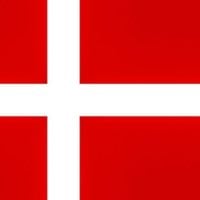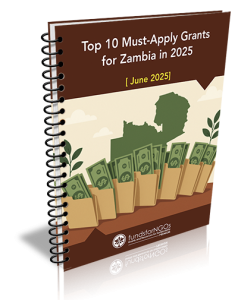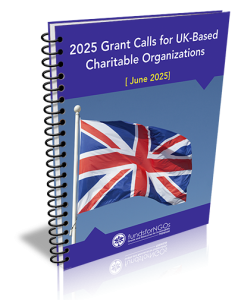The Inter-American Development Bank (IDB) stands as a pivotal institution in the landscape of international finance, dedicated to fostering economic development and social progress across Latin America and the Caribbean. Established in 1959, the IDB has evolved into a cornerstone of regional cooperation, providing financial and technical assistance to its member countries. With a mission to improve lives through sustainable development, the IDB has become a vital partner for governments, private sector entities, and civil society organizations alike.
Its comprehensive approach encompasses a wide array of sectors, including infrastructure, education, health, and environmental sustainability, reflecting the diverse needs and aspirations of the region’s populations. As a multilateral development bank, the IDB plays a crucial role in mobilizing resources and expertise to address the unique challenges faced by Latin American and Caribbean nations. The bank’s governance structure, which includes member countries from both the region and beyond, ensures that its initiatives are aligned with the priorities of its stakeholders.
By fostering dialogue and collaboration among diverse actors, the IDB not only facilitates access to funding but also promotes knowledge sharing and capacity building. This multifaceted approach enables the bank to respond effectively to the dynamic economic landscape of the Americas, positioning itself as a key player in the pursuit of sustainable growth and equitable development.
The Inter-American Development Bank’s role in promoting economic growth
Enhancing Productivity and Competitiveness
The Inter-American Development Bank (IDB) is committed to promoting economic growth in the region by focusing on enhancing productivity and competitiveness. To achieve this, the bank provides financial resources and technical assistance to countries, enabling them to implement policies that stimulate investment, innovation, and job creation. The IDB supports various initiatives aimed at improving the business environment, fostering entrepreneurship, and enhancing access to finance for both large enterprises and small businesses.
Driving Economic Growth and Resilience
This comprehensive approach not only drives economic growth but also contributes to the overall resilience of economies in the face of external shocks. The IDB recognizes that sustainable economic growth must be inclusive and equitable, and therefore prioritizes projects that address structural inequalities and promote social mobility. By doing so, the bank helps to create a more stable and cohesive society.
Promoting Inclusive Growth and Social Mobility
The IDB invests in education, workforce development, and social protection systems to create a more skilled labor force capable of meeting the demands of a rapidly changing global economy. This emphasis on inclusive growth ensures that all segments of society can benefit from economic progress, thereby fostering social cohesion and stability within countries. As a result, the IDB contributes not only to immediate economic gains but also lays the groundwork for long-term prosperity.
Investment in infrastructure and sustainable development

Infrastructure investment is a cornerstone of the IDB’s strategy for promoting economic growth and sustainable development in the Americas. Recognizing that robust infrastructure is essential for facilitating trade, enhancing connectivity, and improving access to essential services, the bank allocates significant resources to projects that upgrade transportation networks, energy systems, and water supply facilities. These investments not only create jobs during construction but also yield long-term benefits by boosting productivity and reducing costs for businesses and consumers alike.
In addition to traditional infrastructure projects, the IDB is increasingly focused on sustainable development initiatives that address environmental challenges while promoting economic growth. The bank actively supports projects that incorporate renewable energy sources, improve energy efficiency, and promote climate resilience. By prioritizing sustainability in its investments, the IDB helps countries transition towards greener economies that can withstand the impacts of climate change.
This dual focus on infrastructure and sustainability not only enhances economic prospects but also ensures that development efforts are aligned with global environmental goals.
Support for small and medium-sized enterprises
Small and medium-sized enterprises (SMEs) are often hailed as the backbone of economies in Latin America and the Caribbean, accounting for a significant share of employment and economic output. The IDB recognizes the critical role that SMEs play in driving innovation and job creation, which is why it has developed targeted programs to support their growth and development. By providing access to financing, technical assistance, and capacity-building initiatives, the bank empowers SMEs to overcome barriers that often hinder their expansion.
This support is particularly vital in a region where many small businesses struggle to secure funding from traditional financial institutions. Furthermore, the IDB fosters an entrepreneurial ecosystem by promoting policies that enhance access to markets and improve regulatory frameworks for SMEs. Through partnerships with local governments and private sector actors, the bank works to create an enabling environment where small businesses can thrive.
This includes initiatives aimed at simplifying business registration processes, reducing bureaucratic hurdles, and facilitating access to digital technologies. By championing SMEs, the IDB not only stimulates economic growth but also contributes to job creation and poverty reduction across the region.
Initiatives to reduce inequality and promote social inclusion
Addressing inequality is a fundamental aspect of the IDB’s mission, as disparities in income and opportunity can undermine social cohesion and hinder sustainable development. The bank implements a range of initiatives designed to reduce inequality and promote social inclusion across its member countries. These efforts encompass various sectors, including education, health care, housing, and social protection systems.
By investing in programs that target marginalized communities and vulnerable populations, the IDB aims to create pathways for upward mobility and empower individuals to participate fully in their societies. In addition to direct investments in social programs, the IDB advocates for policy reforms that promote equity and inclusion at a systemic level. This includes supporting governments in designing social safety nets that protect those most at risk during economic downturns or crises.
The bank also emphasizes the importance of gender equality in its initiatives, recognizing that empowering women is essential for achieving broader social progress. By integrating gender considerations into its projects and policies, the IDB seeks to dismantle barriers that prevent women from accessing opportunities in education, employment, and entrepreneurship.
Collaboration with governments and private sector partners

Collaborative Solutions for Regional Challenges
By leveraging the strengths of each stakeholder, the IDB can create solutions that address the specific needs of each country. This approach not only enhances project outcomes but also builds local capacity by involving communities in decision-making processes.
Mobilizing Resources through Public-Private Partnerships
The IDB actively engages with private sector partners to mobilize additional resources for development projects. By creating public-private partnerships (PPPs), the bank facilitates investments in critical sectors such as infrastructure, health care, and education. These partnerships enable governments to tap into private sector expertise while sharing risks associated with large-scale projects.
Aligning Interests for Sustainable Development
Furthermore, by fostering dialogue between public institutions and private enterprises, the IDB helps align interests and priorities, ensuring that development efforts are both effective and sustainable.
The future of economic growth in the Americas and the role of the Inter-American Development Bank
Looking ahead, the future of economic growth in the Americas will be shaped by a myriad of factors ranging from technological advancements to demographic shifts and environmental challenges. The IDB is poised to play a crucial role in navigating this complex landscape by continuing to adapt its strategies to meet emerging needs. As countries grapple with issues such as climate change, digital transformation, and social inequality, the bank’s expertise in financing innovative solutions will be indispensable.
Moreover, as regional integration becomes increasingly important for fostering trade and investment flows among countries in Latin America and the Caribbean, the IDB will continue to serve as a facilitator of collaboration across borders. By promoting regional projects that enhance connectivity and cooperation among member states, the bank can help unlock new opportunities for economic growth while addressing shared challenges. In this evolving context, the Inter-American Development Bank remains committed to its mission of improving lives through sustainable development—an endeavor that will require ongoing partnership-building, innovative financing mechanisms, and a steadfast focus on inclusivity as it looks toward a prosperous future for all citizens of the Americas.
For organizations interested in sustainable urban development, the Inter-American Development Bank often supports projects that aim to enhance urban environments in Latin America and the Caribbean. A related opportunity can be found in the call for proposals under the DUT Program for Sustainable Urban Transitions. This program seeks to fund initiatives that promote sustainable urban development, which aligns with the goals of the Inter-American Development Bank in fostering comprehensive, sustainable, and inclusive urban growth. For more details on how to apply and the type of projects supported, you can visit the program’s page here.
FAQs
What is the Inter-American Development Bank (IDB)?
The Inter-American Development Bank (IDB) is the largest source of development financing for Latin America and the Caribbean. It was established in 1959 and is headquartered in Washington, D.C.
What is the mission of the Inter-American Development Bank?
The mission of the Inter-American Development Bank is to improve lives in Latin America and the Caribbean by supporting economic and social development and regional integration.
How is the Inter-American Development Bank funded?
The Inter-American Development Bank is funded through contributions from its 48 member countries, as well as from borrowing in international financial markets.
What types of projects does the Inter-American Development Bank finance?
The Inter-American Development Bank finances a wide range of projects, including infrastructure development, education and training, healthcare, environmental sustainability, and private sector development.
What is the governance structure of the Inter-American Development Bank?
The Inter-American Development Bank is governed by its Board of Governors, Board of Executive Directors, and President. The Board of Governors is the highest authority and is composed of the finance ministers or central bank governors of the member countries.
How does the Inter-American Development Bank support sustainable development?
The Inter-American Development Bank supports sustainable development through its financing of projects that promote environmental sustainability, renewable energy, climate change mitigation, and natural disaster resilience.








































